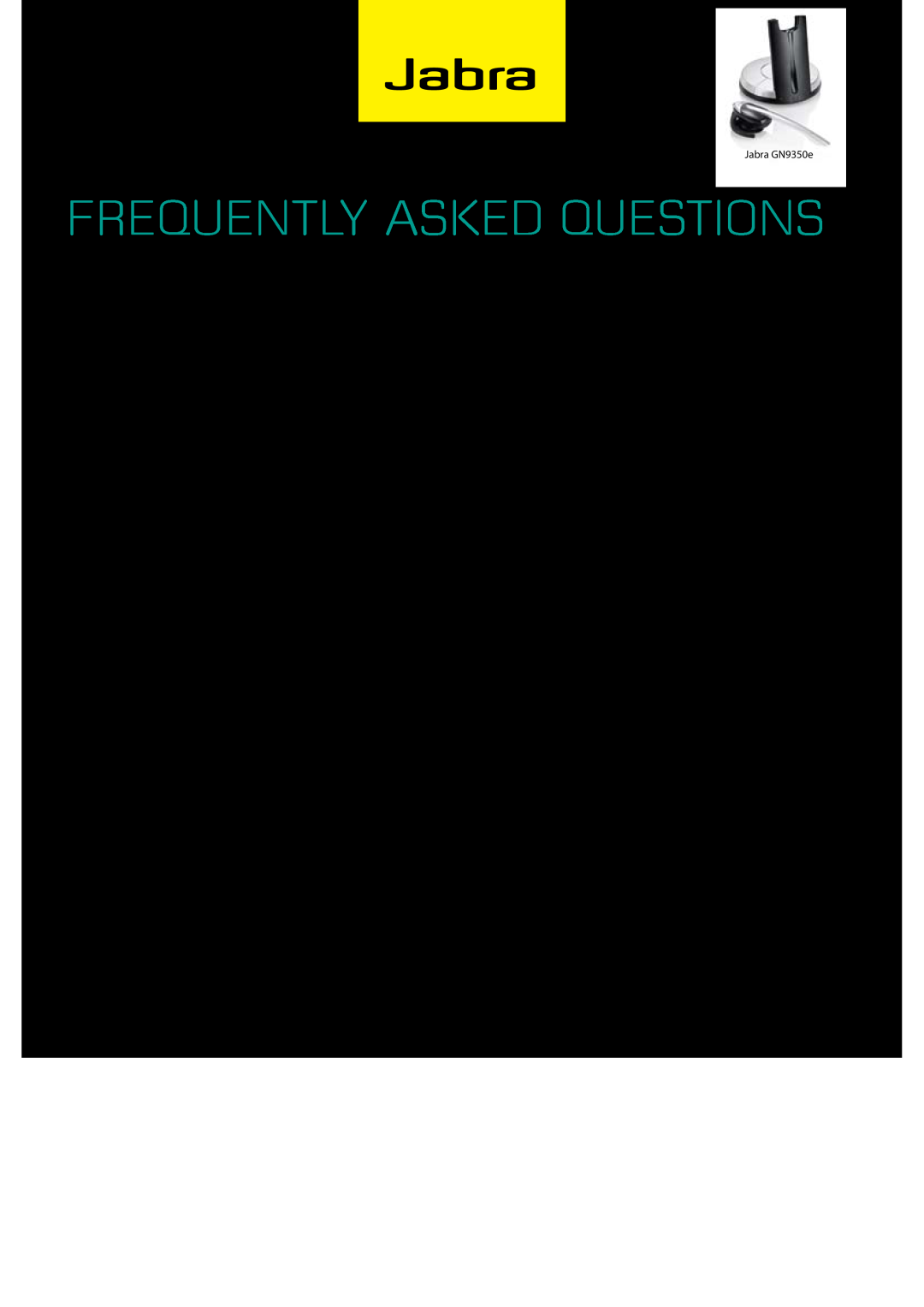
9300e series
FAQ
Section 3
3.2: Security
Jabra GN9350e
Frequently asked questions
QI have a WiFi network. Can WiFi and the GN9350e/ GN9330e USB/GN9330e coexist in the same location?
AYes they can, and there will not be any interference. The GN9300e series operate in different frequency bands than WiFi equipment/Wireless LANs. In North America, the GN9300e series utilize the newly opened DECT frequency band
QCan I get hearing damages, using the headset?
AAll GN Netcom products meet the highest user protection standards, with sophisticated sound limiting systems to protect the user against excessive sound levels. GN Netcom specifies for headsets that the maximum sound pressure must be below 118 dB SPL, which is approved by international standards and by telecom administrations. This means all our headsets have incorporated protection circuits. All GN Netcom headsets that are connected directly to the phone or through an analog amplifier are fitted with Peak- Stop™, an electronic peak control gateway (transistor) that does not allow excessively loud sounds to pass to the ear. It reacts when the sound enters the cord and removes potentially harmful sound peaks before they reach the headset speaker. PeakStop actively protects the user by keeping the absolute sound level and the energy of the peak in the safe zone at all times. As a result, the headset user will never be exposed to the full effect of an excessive peak and consequently the risk of harming the sensitive mechanisms of the ear is minimized.
QWhat additional protection does the IntelliTone™ (automatic noise exposure level control) of the GN9350e give the user?
QCan the product cause allergic reactions?
AThe headband is made of stainless steel which does not have a nickel coated surface. The stainless steel alloy has been tested for nickel release in accordance with the European standard EN 1811:1998 (according to EU Directive 94/27/EF, the nickel release must be below 0.50 gram/cm2 /week). The headband nickel release is well below the EN1811 limit. The leatherette ear cushion does not contain vinyl or latex. The GN9350e/GN9330e USB/GN9330e does not contain PVC.
QIs it possible to listen in to conversations made with GN9350e/GN9330e USB/GN9330e wireless headsets?
AThe risk of unauthorized access to DECT voice calls is extremely limited. Just like GN Netcom’s other wireless headsets, the GN9350e and GN9330e digitally encrypt any call, providing complete calling security and confidence (part of the DECT standard). For
QIs radiation from a GN9350e/GN9330e USB/GN9330e wireless headset dangerous?
AThe GN9350e/GN9330e USB/GN9330e operate using radio signals in the frequency band from 1880 to 1900 MHz and in the band from 1920 to 1930 MHz, using the DECT protocol for transmission between headset and base. The radiowave exposure of these products is between 0.01 and 63 milliwatts and well below national standards. More information is available in a separate whitepaper on radiation and on www.jabra.com.
AWith this feature, you can let the headset automatically ensure that you are not exposed to a higher noise level from the headset during your workday than described in the EU Directive 2003/10/EC or the TT4 threshold used in Australia. This level is set via the display of the GN9350e, while users of the GN9330e or other wireless headsets will have to find other means to monitor the level of noise exposure. Please refer to separate whitepaper for further details.
